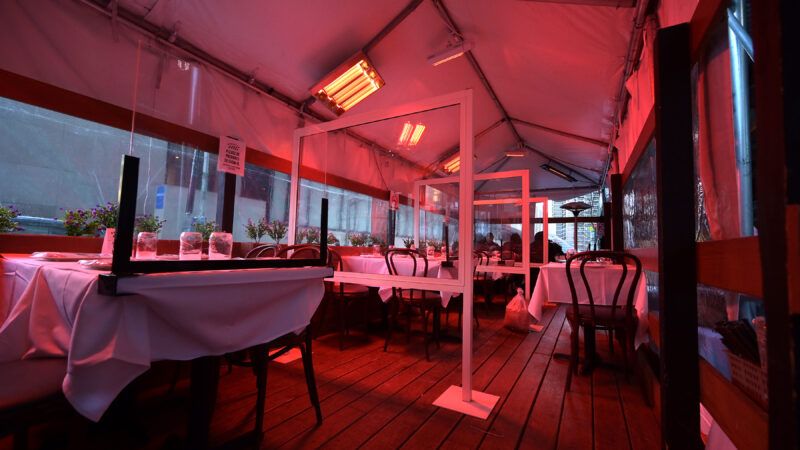Plexiglass Barriers Are Everywhere, but They're Probably Useless
There's a good chance they haven't been preventing the spread of COVID, and they might even be counterproductive.

Eateries have adapted to COVID in countless ways. Hostesses take our temperatures upon entry. We scan QR codes instead of reading paper menus. We are served by masked waiters. In some cities, unsightly plexiglass barriers have appeared between tables and bar seats.
Restaurants should be given broad latitude to adapt how they see fit, to best protect their workers and return a degree of confidence to their customers. But some of these adaptations verge on hygiene theater. When those plexiglass barriers are used in classrooms, they "might be making things worse by blocking ventilation," to quote Zeynep Tufekci, who then points to a new study in Science.
Aerosol scientists kept telling me that plexiglass barriers might be making things *worse* by blocking ventilation. Just out in Science. Desk shields associated with *increased* illness risk in schools. Closing playground? Also uptick. So many upshots. https://t.co/lcyt647Xkm pic.twitter.com/JZs0CcdCO8
— zeynep tufekci (@zeynep) May 7, 2021
For a virus that spreads via airborne transmission of aerosols—something scientists have known for many months, though it took the World Health Organization until the end of April to update its guidance—these plastic barriers between diners were always a confusing addition. Think of the particles that disperse through the air when someone smokes a cigarette. A plastic barrier wouldn't prevent you from smelling that cigarette and breathing some of that same air.
It would be one thing if this form of hygiene theater was limited to restaurants. But school districts across the country have forced children to try to learn while encased in plexiglass desk dividers—that is, if they've allowed kids to return to full-time in-person schooling at all.
Not only does this make it harder for children to connect with their friends and teachers, but forcing them to learn this way may lead them to speak up louder to be heard—an act that increases aerosol production and is more likely to spread COVID than speaking at a quieter volume. Given the incredibly low risk of death to children posed by COVID, and the mounting evidence that Plexiglass barriers do not make people safer, it's past time to remove them; a kindergarten classroom shouldn't be filled with thick, see-through partitions like a convenience store in a bad part of town.
Some might counter that if they make people feel safer, that ought to be reason enough to keep plexiglass barriers in place. But this is misguided. Hygiene theater gives people a false understanding of how this virus actually works and which preventative measures to take. Pervasive COVID anxiety should not be used to justify silly rituals, especially when there's good evidence a ritual may hurt us in the end.


Show Comments (158)